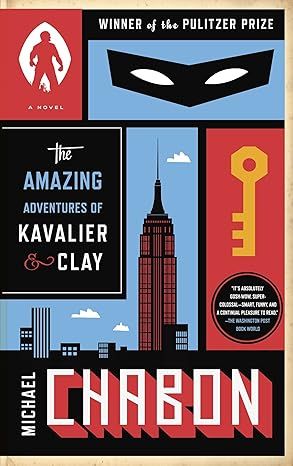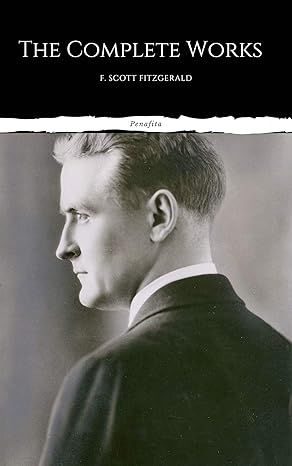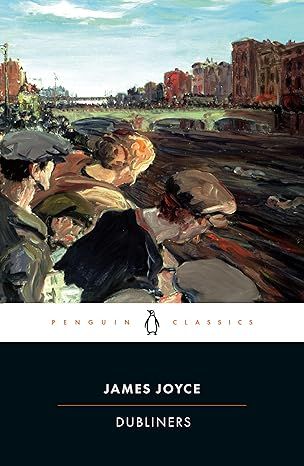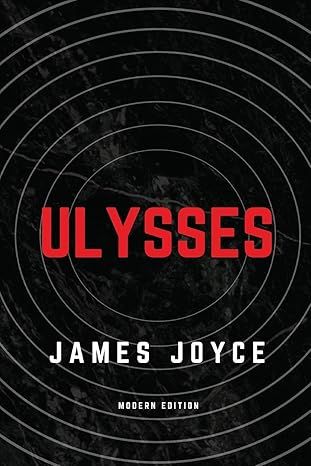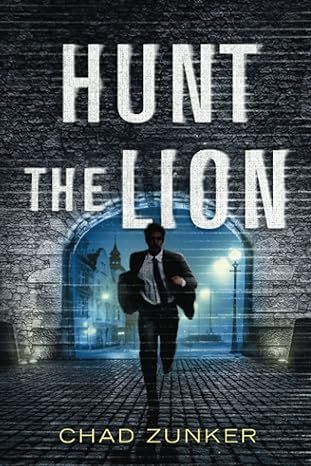The Amazing Adventures of Kavalier & Clay: A Novel
4.5
-
5,028 ratings
WINNER OF THE PULITZER PRIZE • NEW YORK TIMES BESTSELLER • The epic, beloved novel of two boy geniuses dreaming up superheroes in New York’s Golden Age of comics, now with special bonus material by the author—soon to be a Showtime limited series
“It's absolutely gosh-wow, super-colossal—smart, funny, and a continual pleasure to read.”—The Washington Post Book World
Named one of the 10 Best Books of the Decade by Entertainment Weekly • Finalist for the PEN/Faulkner Award, National Book Critics Circle Award, and Los Angeles Times Book Prize
A “towering, swash-buckling thrill of a book” (Newsweek), hailed as Chabon’s “magnum opus” (The New York Review of Books), The Amazing Adventures of Kavalier & Clay is a triumph of originality, imagination, and storytelling, an exuberant, irresistible novel that begins in New York City in 1939.
A young escape artist and budding magician named Joe Kavalier arrives on the doorstep of his cousin, Sammy Clay. While the long shadow of Hitler falls across Europe, America is happily in thrall to the Golden Age of comic books, and in a distant corner of Brooklyn, Sammy is looking for a way to cash in on the craze. He finds the ideal partner in the aloof, artistically gifted Joe, and together they embark on an adventure that takes them deep into the heart of Manhattan, and the heart of old-fashioned American ambition. From the shared fears, dreams, and desires of two teenage boys, they spin comic book tales of the heroic, fascist-fighting Escapist and the beautiful, mysterious Luna Moth, otherworldly mistress of the night. Climbing from the streets of Brooklyn to the top of the Empire State Building, Joe and Sammy carve out lives, and careers, as vivid as cyan and magenta ink.
Spanning continents and eras, this superb book by one of America’s finest writers remains one of the defining novels of our modern American age.
Winner of the Bay Area Book Reviewers Award and the New York Society Library Book Award
Read more
Kindle
$9.99
Available instantly
Audiobook
$0.00
with membership trial
Hardcover
$18.42
Paperback
$14.82
Ships from
Amazon.com
Payment
Secure transaction
ISBN-10
9780812983586
ISBN-13
978-0812983586
Print length
704 pages
Language
English
Publisher
Random House Trade Paperbacks
Publication date
December 31, 2011
Dimensions
5.4 x 1.43 x 8.1 inches
Item weight
1.18 pounds
Popular highlights in this book
The true magic of this broken world lay in the ability of the things it contained to vanish, to become so thoroughly lost, that they might never have existed in the first place.
Highlighted by 1,202 Kindle readers
“Never worry about what you are escaping from,” he said. “Reserve your anxieties for what you are escaping to.”
Highlighted by 508 Kindle readers
“People notice only what you tell them to notice,” he said. “And then only if you remind them.”
Highlighted by 318 Kindle readers
Product details
ASIN :
0812983580
File size :
3380 KB
Text-to-speech :
Enabled
Screen reader :
Supported
Enhanced typesetting :
Enabled
X-Ray :
Enabled
Word wise :
Enabled
Editorial reviews
“The depth of Chabon’s thought, his sharp language, his inventiveness, and his ambition make this a novel of towering achievement.”—The New York Times Book Review
“I’m not sure what the exact definition of a ‘great American novel’ is, but I’m pretty sure that Michael Chabon’s sprawling, idiosyncratic, and wrenching new book is one.”—New York
“The themes are masterfully explored, leaving the book’s sense of humor intact and characters so tightly developed they could walk off the page.”—Newsweek
“A page-turner in the most expansive sense of the word: its gripping plot pushes readers forward. . . . Chabon is a reader’s writer, with sentences so cozy they’ll wrap you up and kiss you goodnight.”—Chicago Tribune
Sample
Part One -- The Escape Artist
In later years, holding forth to an interviewer or to an audience of aging fans at a comic book convention, Sam Clay liked to declare, apropos of his and Joe Kavalier's greatest creation, that back when he was a boy, sealed and hog-tied inside the airtight vessel known as Brooklyn, New York, he had been haunted by dreams of Harry Houdini. "To me, Clark Kent in a phone booth and Houdini in a packing crate, they were one and the same thing," he would learnedly expound at WonderCon or Angouleme or to the editor of Comics Journal. "You weren't the same person when you came out as when you went in. Houdini's first magic act, you know, back when he was just getting started. It was called 'Metamorphosis: It was never just a question of escape. It was also a question of transformation." The truth was that, as a kid, Sammy had only a casual interest, at best, in Harry Houdini and his legendary feats; his great heroes were Nikola Tesla, Louis Pasteur, and Jack London. Yet his account of his role-of the role of his own imagination-in the Escapist's birth, like all of his best fabulations, rang true. His dreams had always been Houdiniesque: they were the dreams of a pupa struggling in its blind cocoon, mad for a taste of light and air.
Houdini was a hero to little men, city boys, and Jews; Samuel Louis Klayman was all three. He was seventeen when the adventures began: bigmouthed, perhaps not quite as quick on his feet as he liked to imagine, and tending to be, like many optimists, a little excitable. he was not, in any conventional way, handsome. His face was an inverted triangle, brow large, chin pointed, with pouting lips and a blunt, quarrelsome nose. He slouched, and wore clothes badly: he always looked as though he had just been jumped for his lunch money. He went forward each morning with the hairless cheek of innocence itself, but by noon a clean shave was no more than a memory, a hoboish penumbra on the jaw not quite sufficient to make him look tough. He thought of himself as ugly, but this was because he had never seen his face in repose. He had delivered the Eagle for most of 1931 in order to afford a set of dumbbells, which he had hefted every morning for the next eight years until his arms, chest, and shoulders were ropy and strong; polio had left him with the legs of a delicate boy. He stood, in his socks, five feet five inches tall. Like all of his friends, he considered it a compliment when somebody called him a wiseass. He possessed an incorrect but fervent understanding of the workings of television, atom power, and antigravity, and harbored the ambition-one of a thousand-of ending his days on the warm sunny beaches of the Great Polar Ocean of Venus. An omnivorous reader with a self-improving streak, cozy with Stevenson, London, and Wells, dutiful about Wolfe, Dreiser, and Dos Passos, idolatrous of S. J. Perelman, his self-improvement regime masked the usual guilty appetite. In his case the covert passion-one of them, at any rate-was for those two-bit argosies of blood and wonder, the pulps. He had tracked down and read every biweekly issue of The Shadow going back to 1933, and he was well on his way to amassing complete runs of The Avenger and Doc Savage.
The long run of Kavalier & Clay-and the true history of the Escapists birth-began in 1939, toward the end of October, on the night that Sammy's mother burst into his bedroom, applied the ring and iron knuckles of her left hand to the side of his cranium, and told him to move over and make room in the bed for his cousin from Prague. Sammy sat up, heart pounding in the hinges of his jaw. In the livid light of the fluorescent tube over the kitchen sink, he made out a slender young man of about his own age, slumped like a question mark against the doorframe, a disheveled pile of newspapers pinned under one arm, the other thrown as if in shame across his face. This, Mrs. Klayman said, giving Sammy a helpful shove toward the wall, was Josef Kavalier, her brother Emil's son, who had arrived in Brooklyn tonight on a Greyhound bus, all the way from San Francisco.
"What's the matter with him?" Sammy said. He slid over until his shoulders touched cold plaster. He was careful to take both of the pillows with him. "Is he sick?"
"What do you think?" said his mother, slapping now at the vacated expanse of bedsheet, as if to scatter any offending particles of himself that Sammy might have left behind. She had just come home from her last night on a two-week graveyard rotation at Bellevue, where she worked as a psychiatric nurse. The stale breath of the hospital was on her, but the open throat of her uniform gave off a faint whiff of the lavender water in which she bathed her tiny frame. The natural fragrance of her body was a spicy, angry smell like fresh pencil shavings. "He can barely stand on his own two feet"
Sammy peered over his mother, trying to get a better look at poor Josef Kavalier in his baggy wool suit. He had known, dimly, that he had Czech cousins. But his mother had not said a word about any of them coming to visit, let alone to share Sammy's bed. He wasn't sure just how San Francisco fitted in to the story.
"There you are," his mother said, standing up straight again, apparently satisfied at having driven Sammy onto the easternmost rive inches of the mattress. She turned to Josef Kavalier. "Come here. I want to tell you something." She grabbed hold of his ears as if taking a jug by the handles, and crushed each of his cheeks in turn with her lips. "You made it. All right? You're here."
"All right," said her nephew. He did not sound unconvinced.
She handed him a washcloth and went out. As soon as she left, Sammy reclaimed a few precious inches of mattress while his cousin stood there, rubbing at his mauled cheeks. After a moment, Mrs. Klayman switched off the light in the kitchen, and they were left in darkness. Sammy heard his cousin take a deep breath and slowly let it out The stack of newsprint rattled and then hit the floor with a heavy thud of defeat. His jacket buttons clicked against the back of a chair; his trousers rustled as he stepped out of them; he let fall one shoe, then the other. His wristwatch chimed against the water glass on the nightstand. Then he and a gust of chilly air got in under the covers, bearing with them an odor of cigarette, armpit, damp wool, and something sweet and somehow nostalgic that Sammy presently identified as the smell, on his cousin's breath, of prunes from the leftover ingot of his mother's "special" meatloaf-prunes were only a small part of what made it so very special-which he had seen her wrap like a parcel in a sheet of wax paper and set on a plate in the Frigidaire. So she had known that her nephew would be arriving tonight, had even been expecting him for supper, and had said nothing about it to Sammy.
Josef Kavalier settled back against the mattress, cleared his throat once, tucked his arms under his head, and then, as if he had been unplugged, stopped moving. He neither tossed nor fidgeted nor even so much as flexed a toe. The Big Ben on the nightstand ticked loudly. Josef's breathing thickened and slowed. Sammy was just wondering if anyone could possibly fall asleep with such abandon when his cousin spoke.
"As soon as I can fetch some money, I will find a lodging, and leave the bed," he said. His accent was vaguely German, furrowed with an odd Scots pleat.
"That would be nice," Sammy said. "You speak good English."
"Thank you"
"Where'd you learn it?"
"I prefer not to say."
"It's a secret?"
"It is a personal matter."
"Can you tell me what you were doing in California?" said Sammy. "Or is that confidential information too?"
"I was crossing over from Japan!'
"Japan!" Sammy was sick with envy. He had never gone farther on his soda-straw legs than Buffalo, never undertaken any crossing more treacherous than the flatulent poison-green ribbon that separated Brooklyn from Manhattan Island. In that narrow bed, in that bedroom hardly wider than the bed itself, at the back of an apartment in a solidly lower-middle-class building on Ocean Avenue, with his grandmother's snoring shaking the walls like a passing trolley, Sammy dreamed the usual Brooklyn dreams of flight and transformation and escape. He dreamed with fierce contrivance, transmuting himself into a major American novelist, or a famous smart person, like Clifton Fadiman, or perhaps into a heroic doctor; or developing, through practice and sheer force of will, the mental powers that would give him a preternatural control over the hearts and minds of men. In his desk drawer lay-and had lain for some time-the first eleven pages of a massive autobiographical novel to be entitled either (in the Perelmanian mode)Through Abe Glass, Darkly or (in the Dreiserian) American Disillusionment (a subject of which he was still by and large ignorant). He had devoted an embarrassing number of hours of mute concentration-brow furrowed, breath held-to the development of his brain's latent powers of telepathy and mind control. And he had thrilled to that Iliad of medical heroics, The Microbe Hunters, ten times at least. But like most natives of Brooklyn, Sammy considered himself a realist, and in general his escape plans centered around the attainment of fabulous sums of money.
From the age of six, he had sold seeds, candy bars, houseplants, cleaning fluids, metal polish, magazine subscriptions, unbreakable combs, and shoelaces door-to-door. In a Zharkov's laboratory on the kitchen table, he had invented almost functional button-reattachers, tandem bottle openers, and heatless clothes irons. In more recent years, Sammy's commercial attention had been arrested by the field of professional illustration. The great commercial illustrators and cartoonists Rockwell, Leyendecker, Raymond, Caniff-were at their zenith, and there was a general impression abroad that, at the drawing board, a man could not only make a good living but alter the very texture and tone of the national mood. In Sammy's closet were stacked dozens of pads of coarse newsprint, filled with horses, Indians, football heroes, sentient apes, Fokkers, nymphs, moon rockets, buckaroos, Saracens, tropic jungles, grizzlies, studies of the folds in women's clothing, the dents in men's hats, the lights in human irises, clouds in the western sky. His grasp of perspective was tenuous, his knowledge of human anatomy dubious, his line often sketchy-but he was an enterprising thief. He clipped favorite pages and panels out of newspapers and comic books and pasted them into a fat notebook: a thousand different exemplary poses and styles. He had made extensive use of his bible of clippings in concocting a counterfeit Terry and the Pirates strip called South China Sea, drawn in faithful imitation of the great Caniff. He had knocked off Raymond in something he called Pimpernel of the Planets, and Chester Gould in a lockjawed G-man strip called Knuckle Duster Doyle. He had tried swiping from Hogarth and Lee Falk, from George Herriman, Harold Gray, and Elzie Segar. He kept his sample strips in a fat cardboard portfolio under his bed, waiting for an opportunity, for his main chance, to present itself.
Read more
About the authors
Michael Chabon
Michael Chabon is the bestselling and Pulitzer Prize-winning author of seven novels – including The Amazing Adventures of Kavalier & Clay and The Yiddish Policemen's Union – two collections of short stories, and one other work of non-fiction. He lives in Berkeley, California, with his wife and children.
Reviews
Customer reviews
4.5 out of 5
5,028 global ratings
Joshua G. Feldman
5
Shazam - Genius - an Encyclopedia of how men love.
Reviewed in the United States on August 24, 2007
Verified Purchase
It's been years since I've been as powerfully affected by a novel as I have been by Michael Chabon's Kavalier & Clay. Chabon is a virtuoso. The book is full of discrete vignettes, distinct and perfect as cut gemstones. Riveting, humorous, human, and thematically consistent and resonant - these scenes mesh and build and reflect with dazzling skill. When I first picked it up I couldn't understand - "Pulitzer Prize for a book about a couple of kids who write comic books?" Having read it - now I know. Chabon's amazing skill vividly illuminates New York city of the 30s and 40s and evokes the vanished world of immigrant Jews, the birth of comic books, the horror of the holocaust, as well as delineates the aching expanses of the human heart. Chabon's ability to situate you in place and time is astonishing - as his ability to make characters with depth and penetrating realism. Part of this incredible ability to project depth is his eye for detail. Just like "Moby Dick" teaches you tangentially about whaling and nineteenth century nautical technology this book schools you in such diverse subjects as Golems, Antarctic exploration, shortwave radio, magician's culture, locks, escape tricks, Prague, comic book culture & lore, surrealist art, New York geography and culture and the 1939 world's fair. It's larger than life - but feels incredibly real.
But far more than detail - this book's heart is about the many different ways men love; from moving mountains to fulfill a promise, all the way to casual rape. We see men loving family, women, men, art, a dog, a son, men loving pieces of equipment (particularly one loving a radio and another an airplane), etc... We see the stupidity and the wisdom - all the human frailty; and incredible resiliency and strength. It's funny - while reading the focus seems more on the pain - but in the end it's the love and connection that breaks your heart. For all its tragic content, this book is incredibly light and hopeful - and funny. There are a bunch of laugh out loud interludes. This is a wise, human, funny and ultimately kind book.
This is, indeed, a story about a couple of kids who create comic books in the late 30s - but it is far more. It is a story of the American dream; a whiz bang novel worthy of the moniker "Great American Novel". Art, fantasy, love, loss, redemption, and life interweave through this story in a distinctly American way that is beautiful, exhilerating, heartbreaking, and ultimately uplifting. This book makes me want to live - and more than any book in recent memory, this book makes want to write. I only wish I could write with this kind of verve and skill. I give this book my highest recommendation.
Read more
7 people found this helpful
Elvin Ortiz
5
Exciting and Profound Historical Fiction
Reviewed in the United States on June 28, 2011
Verified Purchase
The Escapist, a fictional superhero created by Kavalier and Clay, has its origins in the magical feats of Harry Houdini, the Jewish mythological Golem, the Nazi invasion of Europe, and in the cultural-economic milieu of New York of 1939-1941. Josef Kavalier is a Jewish escapee from Nazi occupied Czechoslovakia who has left his family behind. He also has been taught to be an escape artist by Bernard Kornblum and escapes in a coffin accompanied by a legendary Golem. Samuel Klayman lives with his mother in Brooklyn, had been a victim of polio, and his father abandoned him during his childhood. He is also an avid consumer of comic books. When Sammy and Josef get together they form the Escapist. Although the Escapist makes millions for its distributors Sheldon Anapol and Jack Ashkenazy, and makes its creators rich, the Escapist has the metaphorical power of compensating for Joe's feeling of incompetence in rescuing his family from the Nazi regime and survival's guilt; whereas for Sammy, the Escapist compensates for his physical handicap (his legsvare weak due to polio), low self-esteem, and supressed homosexual urges.
This historical novel, divided in six parts, covers the story of New York from the arrival of Josef to 1954 with Sammy facing the infamous Senate Hearings on juvenile delinquency and comic books led by Senator Kefauver.
The novel has cameo appearances of Al Smith, Salvador Dali, Orson Welles and Dolores del Rio, Stan Lee, Gil Kane, and Senators Hendrickson and Kefauver. Important landmarks and places appear as the background for this fictional text: the Empire State Building, the Union Square, the statue of George Washington, the NY World's Fair, Ebbet's Field Park, Prospect Park, etc.
Although this historical fiction aims at presenting real events such as Nazi persecution of Jews in Europe, World War II, the rise of the comic book in 1939, and its latter economic demise and persecution by Dr. Wertham's Seduction of the Innocent and the Kefauver Hearings, it uses this historical context as a metaphor to examine the emotional and psychological make up of a work of art: why do people write, paint, or create? What are Joe and Sammy freeing themselves from? Why are they creating these Golems? Although neither Freud nor Jung are mentioned here, their ideas about creation lie under the subtext of Joe and Sammy's story. This is a story of psychological displacement, maternal and paternal relationships, sexuality, of sexual and cultural identity.
Read more
5 people found this helpful
Sally E. McAfee
5
This is for the book The Amazing Adventures of Cavalier and Clay
Reviewed in the United States on April 26, 2024
Verified Purchase
Excellent writing, use of metaphors, and command of the English language. Much about writing Comic books and the historical period around WWII that I didn't know. It is quite long but was worth the read.
Similar Books
Best sellers
View all
The Tuscan Child
4.2
-
100,022
$8.39
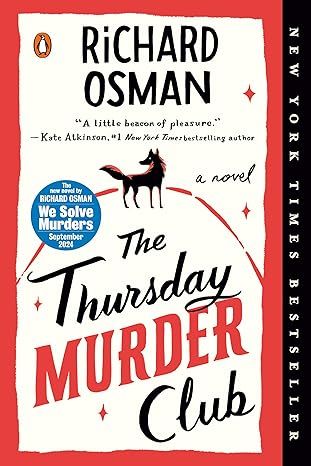
The Thursday Murder Club: A Novel (A Thursday Murder Club Mystery)
4.3
-
155,575
$6.33

Sapiens: A Brief History of Humankind
4.6
-
140,302
$13.49

The Butterfly Garden (The Collector, 1)
4.3
-
88,556
$9.59

Things We Hide from the Light (Knockemout Series, 2)
4.4
-
94,890
$11.66
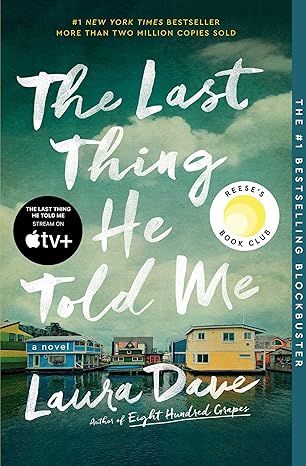
The Last Thing He Told Me: A Novel
4.3
-
154,085
$2.99

The Perfect Marriage: A Completely Gripping Psychological Suspense
4.3
-
143,196
$9.47

The Coworker
4.1
-
80,003
$13.48

First Lie Wins: A Novel (Random House Large Print)
4.3
-
54,062
$14.99

Mile High (Windy City Series Book 1)
4.4
-
59,745
$16.19

Layla
4.2
-
107,613
$8.99

The Locked Door
4.4
-
94,673
$8.53
